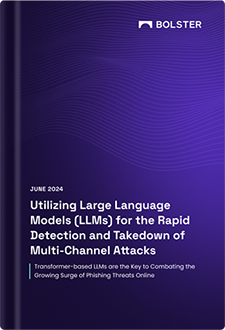Two world-changing innovations – Natural Language Processing (NLP) and Generative AI – are making sweeping impacts across cybersecurity, fraud detection, and digital communications.
And while both technologies harness the power of artificial intelligence, they serve distinct purposes and operate under different mechanisms.
What is Natural Language Processing (NLP)?
Natural Language Processing, or NLP, is a facet of artificial intelligence focused on the interaction between computers and human language. This technology enables computers to understand, interpret, and generate human language in a meaningful and useful way.
NLP is pivotal in performing tasks such as:
Text Classification, which involves categorizing text into predefined groups based on its content. For example, sorting news articles into categories like sports, politics, or technology.
Sentiment Analysis, which involves analyzing text to determine the sentiment expressed within it, such as positive, negative, or neutral. It’s commonly used to gauge public opinion on social media platforms or in product reviews.
Language Translation enables the translation of text from one language to another using NLP models, facilitating communication across different language speakers and enhancing accessibility of information globally.
Question Answering, where NLP is used to build systems that can automatically answer questions posed by humans in a natural language. This involves understanding the question context and retrieving relevant information from a given data source.
Chatbot Development, which involves creating conversational agents (chatbots) that can engage with users in human-like interactions, providing customer support, gathering information, or helping with navigation on websites (more on this below).
In the context of cybersecurity, NLP is particularly beneficial in fraud detection, where, by analyzing unstructured text like customer emails or transaction descriptions, NLP can extract crucial insights that help in identifying fraudulent activities. For instance, it can detect specific keywords related to fraud, assess sentiment, or identify anomalous communication patterns that mirror known fraudulent cases.
Moreover, NLP plays a crucial role in improving website security and understanding. By analyzing both the content and the underlying code of websites, NLP models can discern the intent of a site, significantly aiding in cybersecurity efforts.
Last, email security is another area where NLP shines, utilizing techniques to analyze content, verify sender authenticity, and understand the contextual use of elements like QR codes to flag potential phishing attempts.
Generative AI and Its Capabilities
Generative AI, particularly through the use of Large Language Models (LLMs) like GPT-3.5 and GPT-4, represents a gigantic leap forward in how machines generate human-like text. These models are trained on extensive datasets that include diverse sources like Wikipedia, Reddit threads, books, and articles. Their design enables them to predict the next words in a sentence, thereby generating coherent and contextually appropriate responses.
In practical applications, generative AI is revolutionizing tasks such as automated customer service, content creation, and even complex legal and technical writing.
Automated Customer Service: Generative AI is used to power chatbots and virtual assistants that handle customer inquiries and problems automatically. These systems can understand and respond to customer requests in real-time, improving efficiency and customer satisfaction while reducing the workload on human staff.
(To clarify since chatbots were mentioned in both sections, NLP allows chatbots to understand and process human inputs, crucial for interpreting intent and context. Generative AI, on the other hand, focuses on producing contextually appropriate, human-like responses. This combination enables chatbots not only to understand user queries but also to generate dynamic responses, enhancing the interaction quality and making conversations more fluid and engaging.)
Content Creation: Generative AI aids in the generation of diverse types of content, including articles, reports, and marketing copy. It can produce creative and informative text that aligns with specified guidelines and styles, making it a valuable tool for writers and marketers.
Complex Legal and Technical Writing: In the legal and technical domains, Generative AI helps draft detailed documents such as contracts, legal briefs, and technical manuals. By understanding the specific jargon and stringent formatting requirements of these fields, it assists professionals in creating precise and compliant documents efficiently.
In cybersecurity, generative AI is being employed to automate responses in fake app takedown processes. By analyzing the natural language data within emails, these models can draft responses that are indistinguishable from those written by humans, thereby enhancing efficiency and scalability in digital communications.
For example, a system can utilize Large Language Models (LLMs) integrated into a software pipeline that not only sends out bulk takedown requests to app stores but also handles incoming responses. When a response is received, the LLM analyzes the email content to determine the next steps—whether to autonomously close the ticket, request further evidence, or, in complex cases requiring expert insight, alert a human analyst. This automated approach enhances the efficiency and scalability of the fake app takedown process.
NLP vs. Generative AI: Understanding the Differences
While both NLP and Generative AI deal with language, their core purposes differ significantly.
NLP is more about comprehension and interaction—understanding human language as it is and responding in a way that is perceived as natural by humans.
NLP focuses on parsing language, extracting meaning, and applying this understanding to real-world applications like fraud detection or sentiment analysis.
Generative AI, on the other hand, is about creation. It takes the foundation that NLP provides and extends it to generate new content based on learned patterns and contexts. It’s not just about understanding or translating existing information but about creating plausible new content that didn’t previously exist.
Conclusion
Both Natural Language Processing and Generative AI are transformative technologies that offer vast potential across various sectors. While NLP provides the tools to decode and understand human language, Generative AI uses these insights to create new, contextually relevant content.
As these technologies continue to evolve, their integration into business processes and everyday applications will only deepen, opening new avenues for innovation and efficiency in an increasingly digital world.
Bolster effectively integrates both NLP for deep analysis and understanding of text data in communications and Generative AI to automate and scale their response capabilities in cybersecurity tasks.
Learn more about domain monitoring and automated phishing protection with Bolster.









